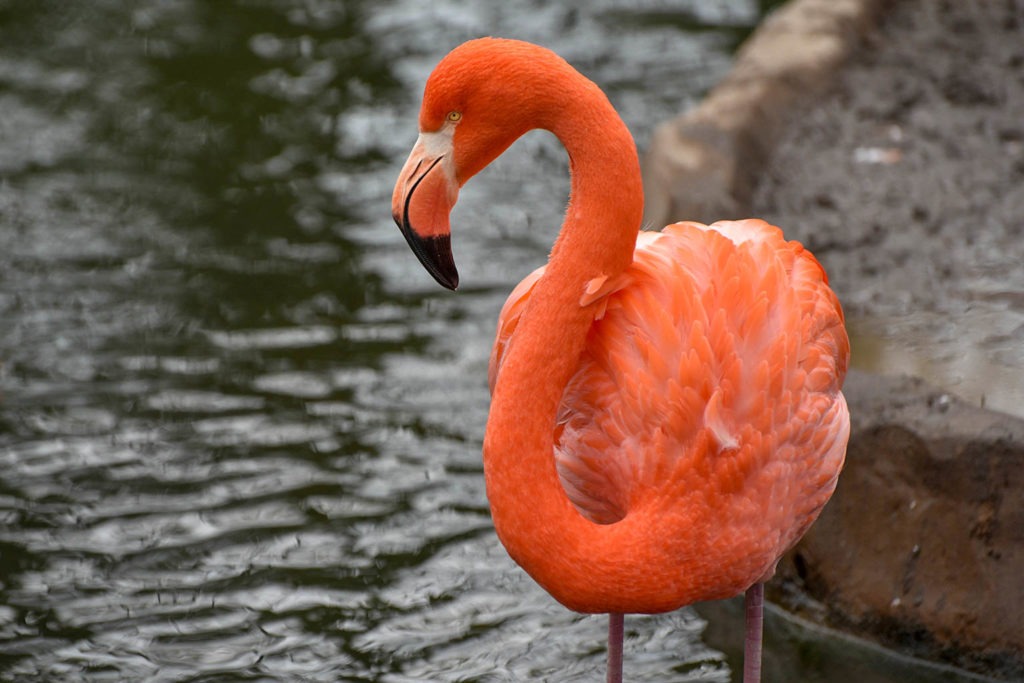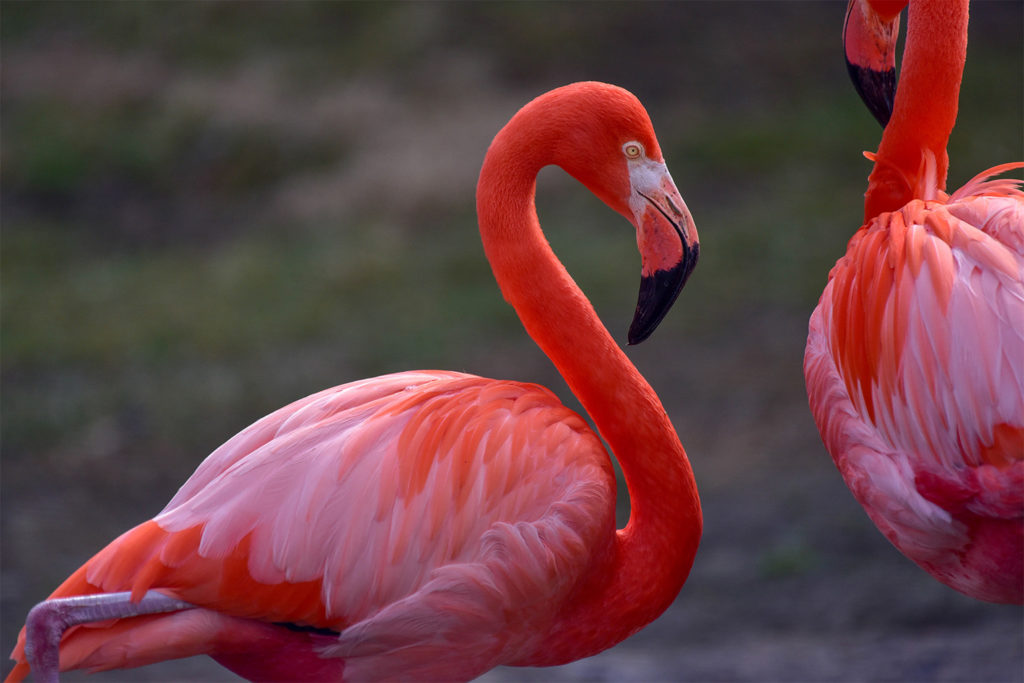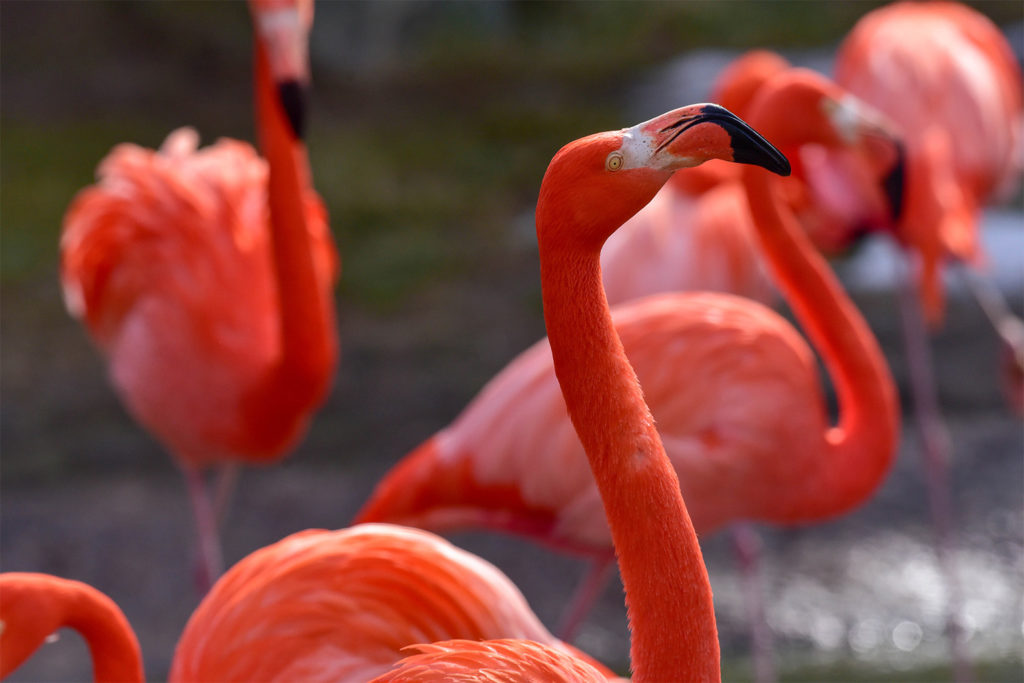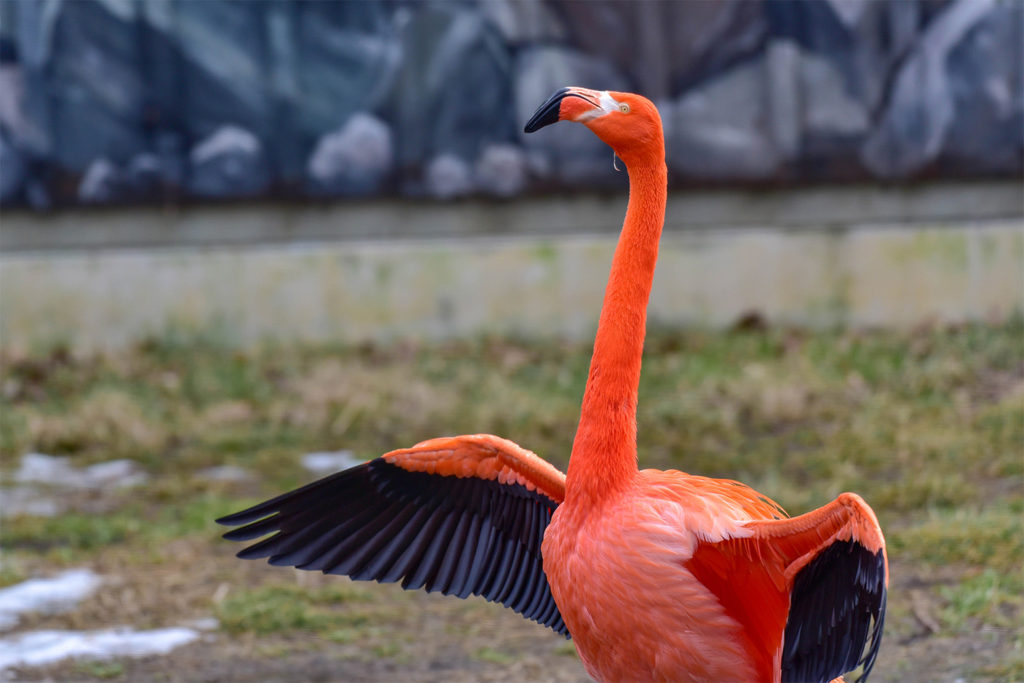Overview
“Where I live”
Caribbean flamingos are found on the north coast of South America, the Yucatan Peninsula in Mexico, and on several Caribbean islands. A small, isolated population also inhabits the Galapagos Islands. You can see the Flamingos in the African Journey, near the Penguin Coast exhibit.
“How I live there”
Caribbean flamingos are highly social birds that communicate vocally and through display behaviors. They gather in large colonies ranging from a few dozen to hundreds of thousands during breeding season. They engage in group courtship displays that prepare the entire colony to breed at once. In addition to body language, flamingos seem to be vocalizing to each other all the time. Caribbean flamingos cackle, trumpet, and grunt. When feeding, they emit soft, low “gabbling” noises. In flight, they honk like geese.
Caribbean flamingos feed in freshwater and saline habitat that might include lagoons, estuaries, mudflats, and coastal or inland lakes. Because of their size and very long legs, they are able to wade into relatively deep water to feed. With heads submerged upside-down, they open their bills slightly and filter water through comb-like plates on either side. They feed on a range of small aquatic plants and animals sifted from the water.
Caribbean flamingos are considered non-migratory, but they are nomadic and will travel great distances (hundreds of miles if necessary) in search of food. Large flocks form large, curving, pink lines in flight.
“Making my mark”
Flamingo feathers turn those beautiful shades of pink, red, and orange from carotenoids in the foods that the birds eat. Carotenoid pigments – which occur naturally in many plants and animals and which make carrots orange, for example – produce shades of pink and red in a flamingo when broken down during digestion. Flamingo chicks are born with grey feathers and do not take on their characteristic coloration until about 2 years of age. Males and females look very similar, although males are typically a bit larger.
“What threatens me”
Flamingos have few natural predators and little competition for the same feeding niche. Development, human disturbance, and habitat loss are the main threats to Caribbean flamingos.
Raising Young
A flamingo pair cooperates in building its mud-cone nest a safe pecking distance away from neighboring pairs. A flamingo nest is a small, circular mound, about 12 inches high, with a depression in the center to hold an egg. The nest must be tall enough to protect it from flooding. The female typically lays only one egg, and both male and female take turns incubating the egg for 27 to 31 days. A few days before hatching, the chick begins to vocalize. The parent birds start to recognize the call of their offspring even before it arrives in the world, and they will continue to recognize and care for their chick until it fledges. About one week after hatching, flamingo chicks leave their nests and gather in large crèches (sort of the equivalent of flamingo daycare or playgroup), which are overseen by a few adults. Between 9 and 13 weeks, flamingo chicks fledge (i.e. learn to fly and feed themselves).
Conservation
Caribbean flamingos are stable as a species and increasing in overall population.
Taxonomy
- Kingdom: Animalia
- Phylum: Chordata
- Subphylum: Vertebrata
- Class: Aves
- Order: Ciconiiformes
- Family: Phoenicopteridae
- Genera: Pheonicopterus
- Species: ruber ruber






